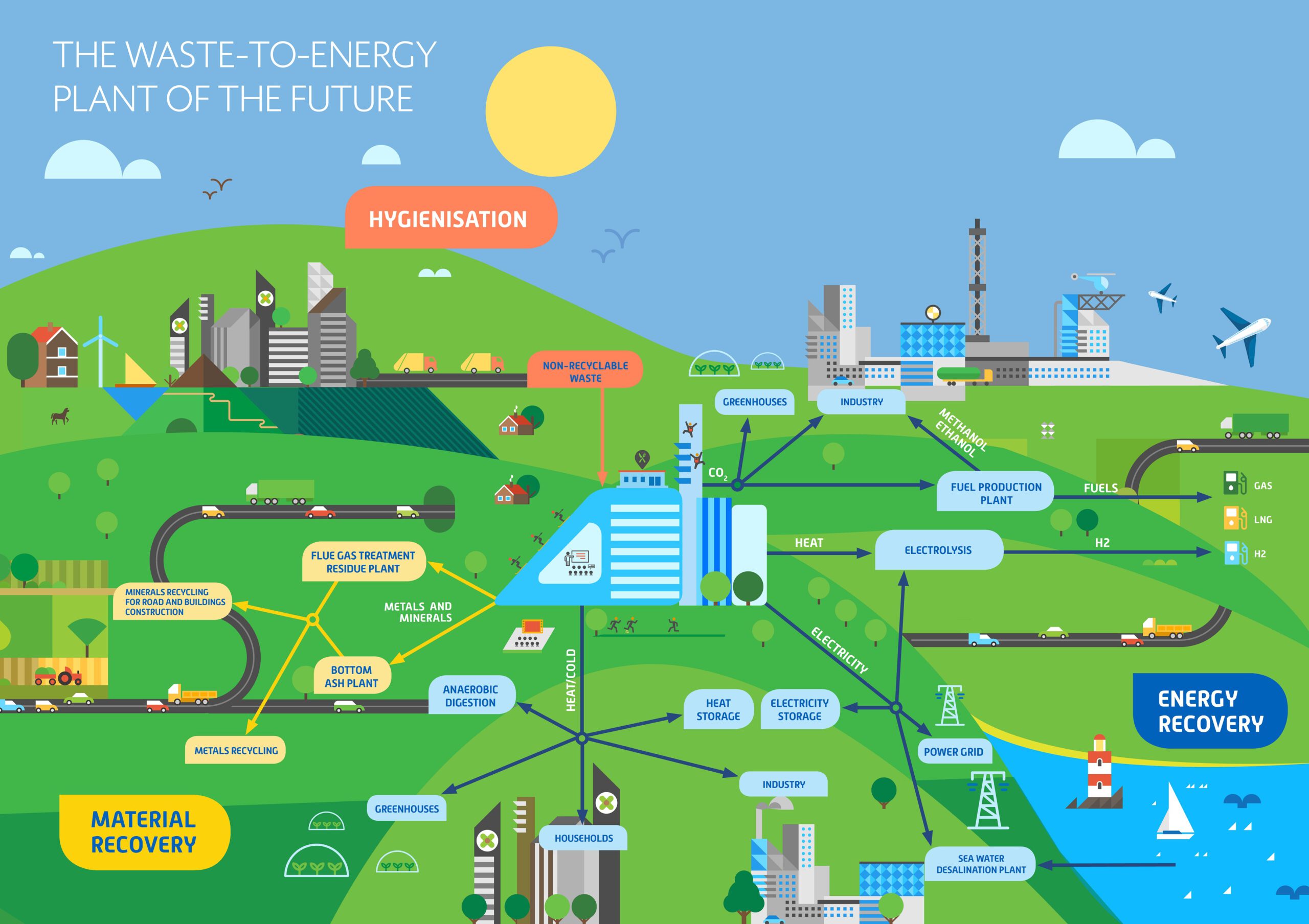Waste-to-Energy 2050: Clean Technologies for Sustainable Waste Management
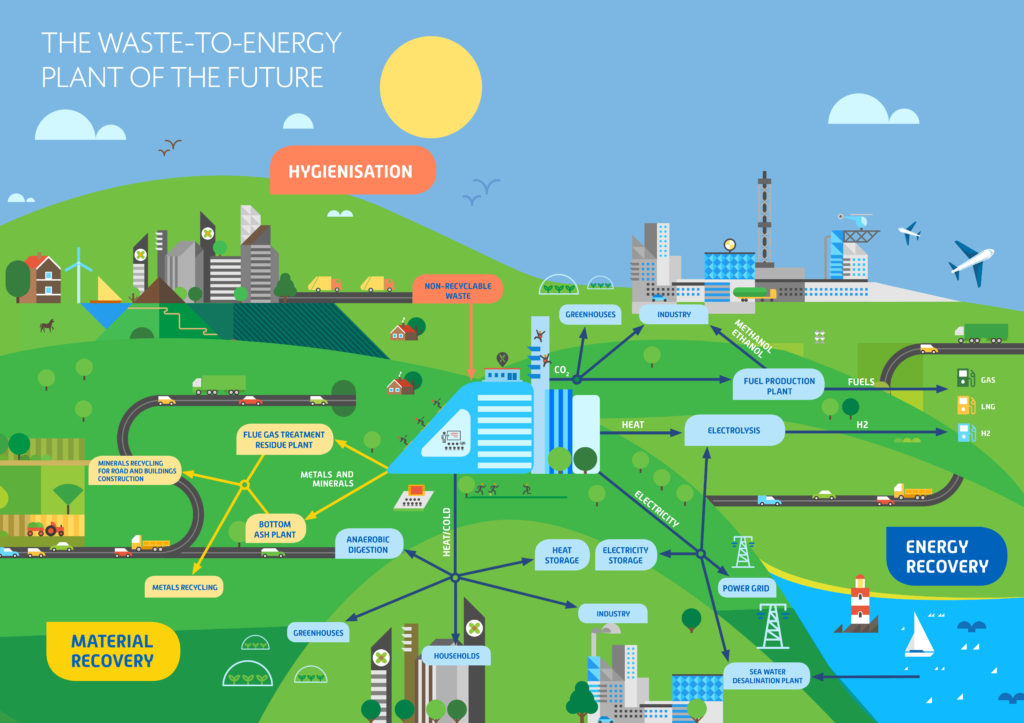
Full document: ESWET_Vision2050
Infographic: “The Waste-to-Energy Plant of the Future“
Waste management is a crucial topic for the sustainable development of our society. Worldwide, waste generation is expected to grow by roughly 60% by 2050 (World Bank data).
The cooperation of all the parties involved – politics, research, industry, policymakers and civil society – is essential. The Waste-to-Energy sector is ready to play its part!

Thanks to advanced technologies, waste management is turning into an integrated waste and resource management logic where non-recyclable waste is turned into a valuable resource for the whole society.
To implement this change, the phasing out of polluting dumpsites is the first objective that should be pursued. Globally, 70% of the waste generated today is landfilled or openly dumped!
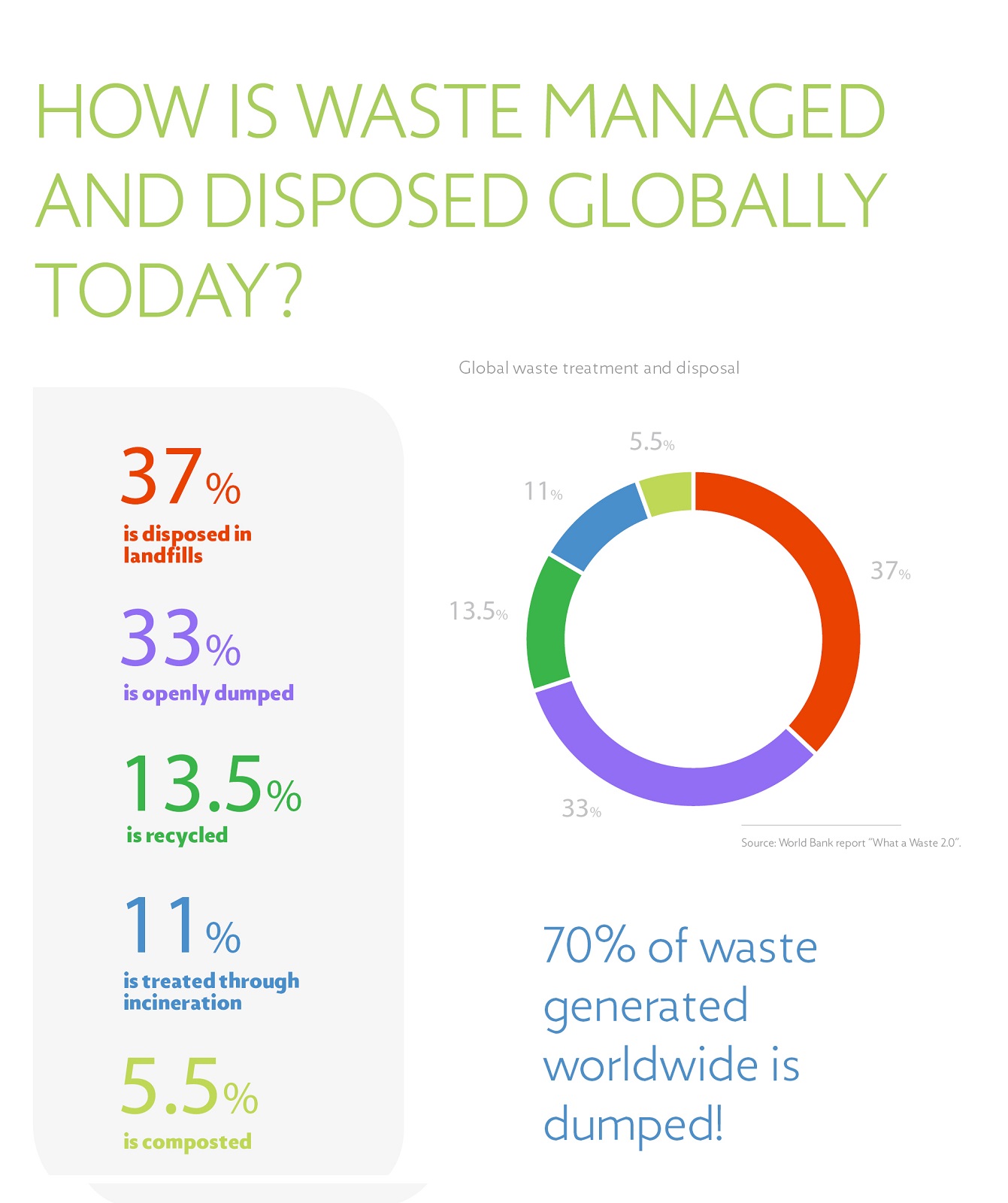
The ESWET Vision 2050 describes how Waste-to-Energy technologies are profoundly committed to resource efficiency and climate change mitigation.
Waste-to-Energy technologies treat non-recyclable waste: waste which is not fit for re-use or recycling and would otherwise be landfilled. For example, contaminated biomass such as wood treated with wood preservatives. In 2018, the European citizens generated 220 million tons of municipal waste. 116 million tons were non-recyclable.
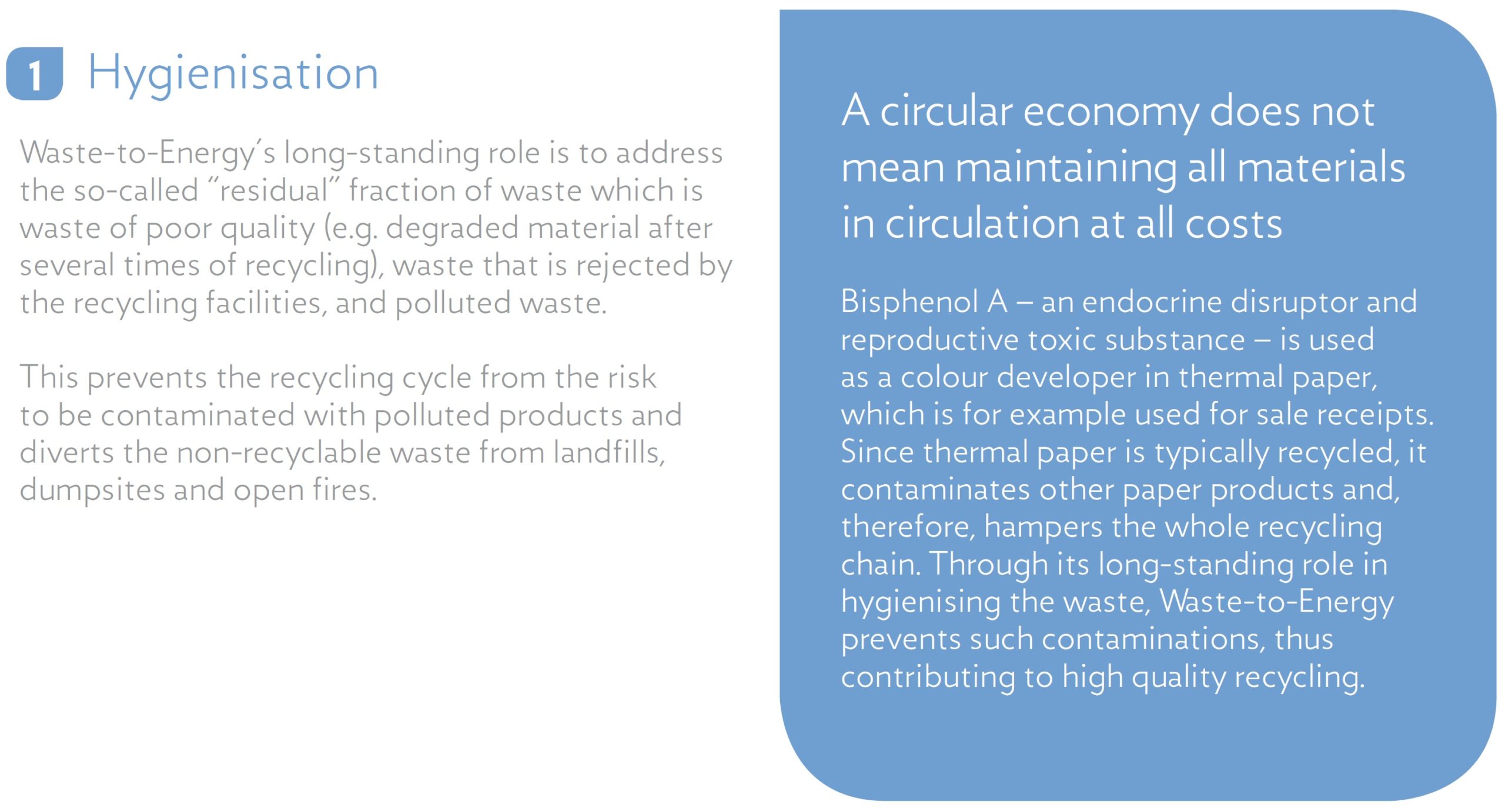
Waste-to-Energy plants transform this waste into energy used for electricity generation, for heating and cooling and for various industrial applications – among others to produce hydrogen. In 2018, Waste-to-Energy plants supplied around 18 million of European citizens with electricity and 15 million of citizens with heat.
The diversion of waste from landfills prevents the production of methane emissions, which is up to 84 times more potent than CO2 over a 20-year period. With around 40 TWh of electricity and 90 TWh of heat produced in Europe annually, Waste-to-Energy saves up to 50 million tonnes of CO2 emissions that would otherwise be emitted by fossil fuels.
By combining the effects of landfill diversion, energy-efficient processes and improved materials recovery, Waste-to Energy is a considerable sink for carbon dioxide (CO2) emissions.
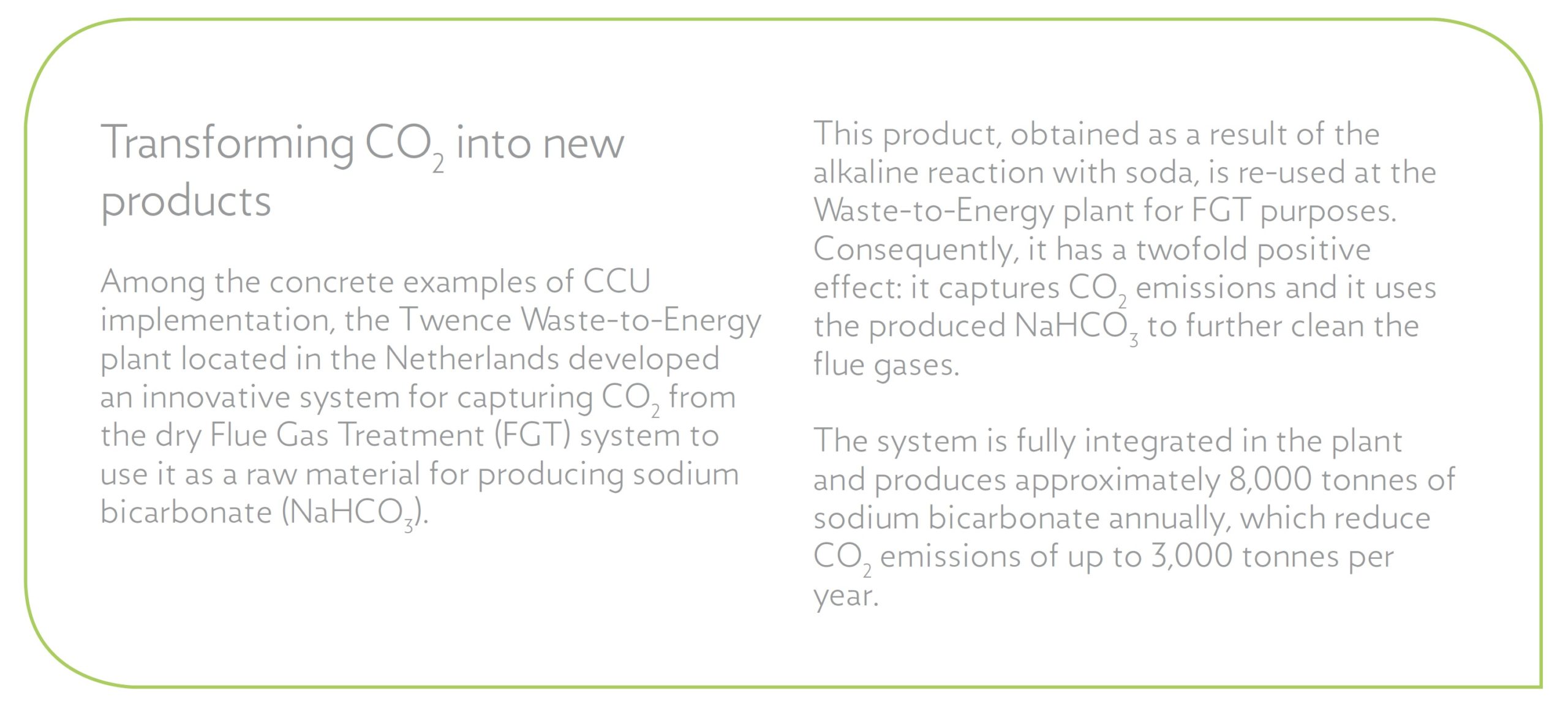
Thanks to advancing technologies, Waste-to-Energy plants will increasingly contribute to low-carbon energy systems and circular societies as they will capture CO2, recover raw materials and supply more energy to decarbonise other sectors.
The Waste-to-Energy plants themselves will turn more and more into edutainment and sport centers, with ski slopes, climbing chimneys and tennis courts, restaurants with vantage points and education centres for school activities.

